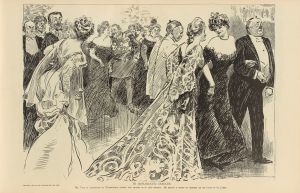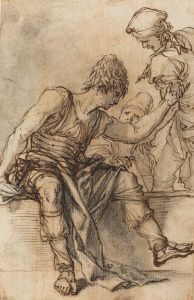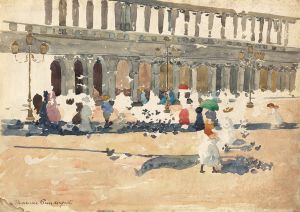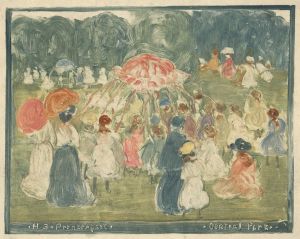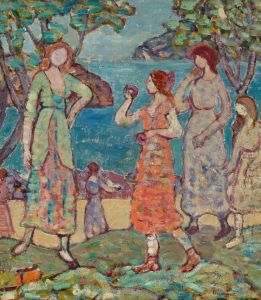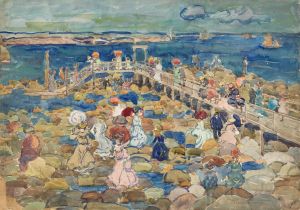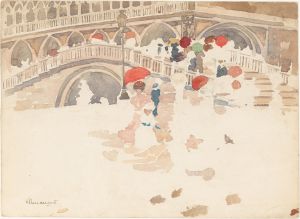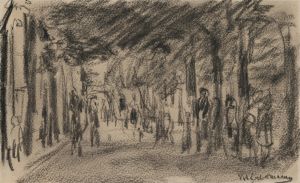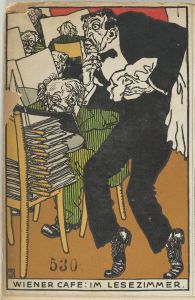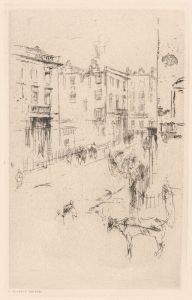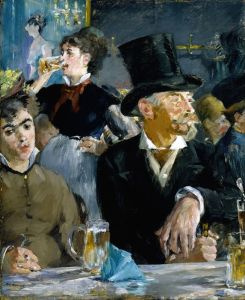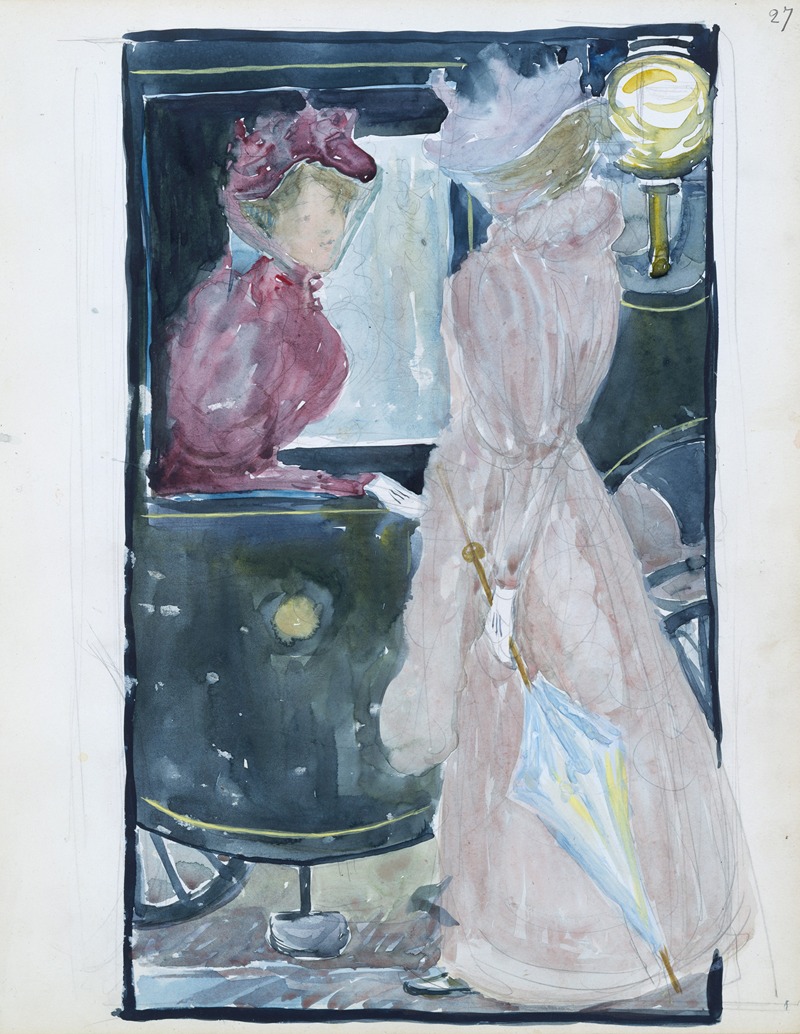
Two women stopping to converse with an acquaintance riding in a carriage
A hand-painted replica of Maurice Prendergast’s masterpiece Two women stopping to converse with an acquaintance riding in a carriage, meticulously crafted by professional artists to capture the true essence of the original. Each piece is created with museum-quality canvas and rare mineral pigments, carefully painted by experienced artists with delicate brushstrokes and rich, layered colors to perfectly recreate the texture of the original artwork. Unlike machine-printed reproductions, this hand-painted version brings the painting to life, infused with the artist’s emotions and skill in every stroke. Whether for personal collection or home decoration, it instantly elevates the artistic atmosphere of any space.
Maurice Prendergast's painting "Two Women Stopping to Converse with an Acquaintance Riding in a Carriage" is a notable work by the American artist, who is recognized for his contributions to Post-Impressionism and his unique style that blends elements of Impressionism with decorative design. Prendergast, born in 1858 in St. John's, Newfoundland, and raised in Boston, Massachusetts, was a prominent figure in the American art scene during the late 19th and early 20th centuries.
Prendergast's work is characterized by its vibrant color palette, rhythmic composition, and a distinctive use of flattened forms and patterns. He was heavily influenced by his travels to Europe, where he was exposed to the works of the Impressionists and Post-Impressionists, as well as the decorative arts. This influence is evident in his paintings, which often depict leisurely scenes of urban life, parks, and beaches, capturing the essence of modern life with a sense of joy and movement.
In "Two Women Stopping to Converse with an Acquaintance Riding in a Carriage," Prendergast captures a moment of social interaction in an urban setting. The painting likely dates from the early 20th century, a period when Prendergast was actively exploring themes of social leisure and the dynamics of public spaces. The scene depicts two women who have paused to engage in conversation with someone in a passing carriage, a common mode of transportation during that era. This interaction is set against a backdrop that suggests a bustling city environment, possibly inspired by Prendergast's observations of life in places like Boston or New York.
The composition of the painting reflects Prendergast's interest in pattern and design. The figures are rendered with a sense of flatness and are integrated into the overall composition through the use of bold outlines and vibrant colors. This approach creates a tapestry-like effect, where the figures and the background are woven together into a harmonious whole. The use of color is particularly striking, with Prendergast employing a range of hues to convey the lively atmosphere of the scene.
Prendergast's technique often involved the use of watercolor and gouache, which allowed him to achieve the luminous quality and fluidity seen in his works. His brushwork is typically loose and expressive, contributing to the dynamic quality of his compositions. In this painting, as in many of his others, Prendergast's style reflects his interest in capturing the fleeting moments of everyday life, imbuing them with a sense of timelessness and universality.
While specific details about the painting's provenance or its current location may not be widely documented, it remains an exemplary piece within Prendergast's oeuvre, illustrating his mastery of color, form, and composition. His works continue to be celebrated for their innovative approach and their ability to convey the vibrancy of early 20th-century urban life.
Maurice Prendergast's legacy as an artist is marked by his ability to blend elements of modernism with a personal vision that emphasized beauty and harmony. "Two Women Stopping to Converse with an Acquaintance Riding in a Carriage" is a testament to his skill in capturing the essence of human interaction within the context of the modern world, making it a valuable piece for understanding the evolution of American art during this period.






